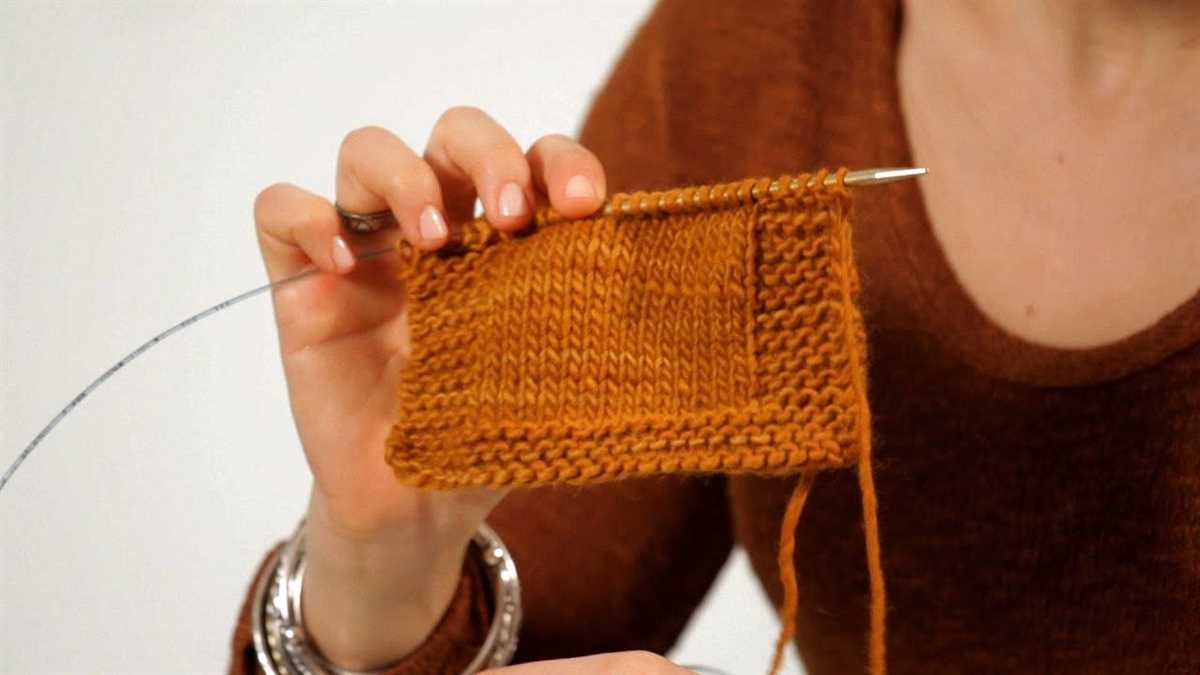
Knitting is a wonderful hobby that allows you to create beautiful and unique items with just a few simple tools – needles and yarn. One of the most exciting aspects of knitting is learning different patterns. Knitting patterns are a set of instructions that guide you through the process of creating a specific design. By adding different stitches and techniques, you can create a wide variety of patterns that are both stylish and functional.
Learning knitting patterns may seem intimidating at first, but with a bit of patience and practice, you’ll soon find yourself creating stunning pieces. Whether you’re a beginner or an experienced knitter, there are patterns available for every skill level. From basic stitches like the garter stitch and stockinette stitch to more advanced techniques like cables and lace, there’s always something new to learn.
By learning knitting patterns, you can explore your creativity and make personalized items for yourself and your loved ones. Knitting patterns can be used to create all sorts of items, from cozy sweaters and scarves to blankets and accessories. Additionally, learning new patterns can also help you enhance your knitting skills and improve your ability to read and follow instructions.
Understanding the basics of knitting
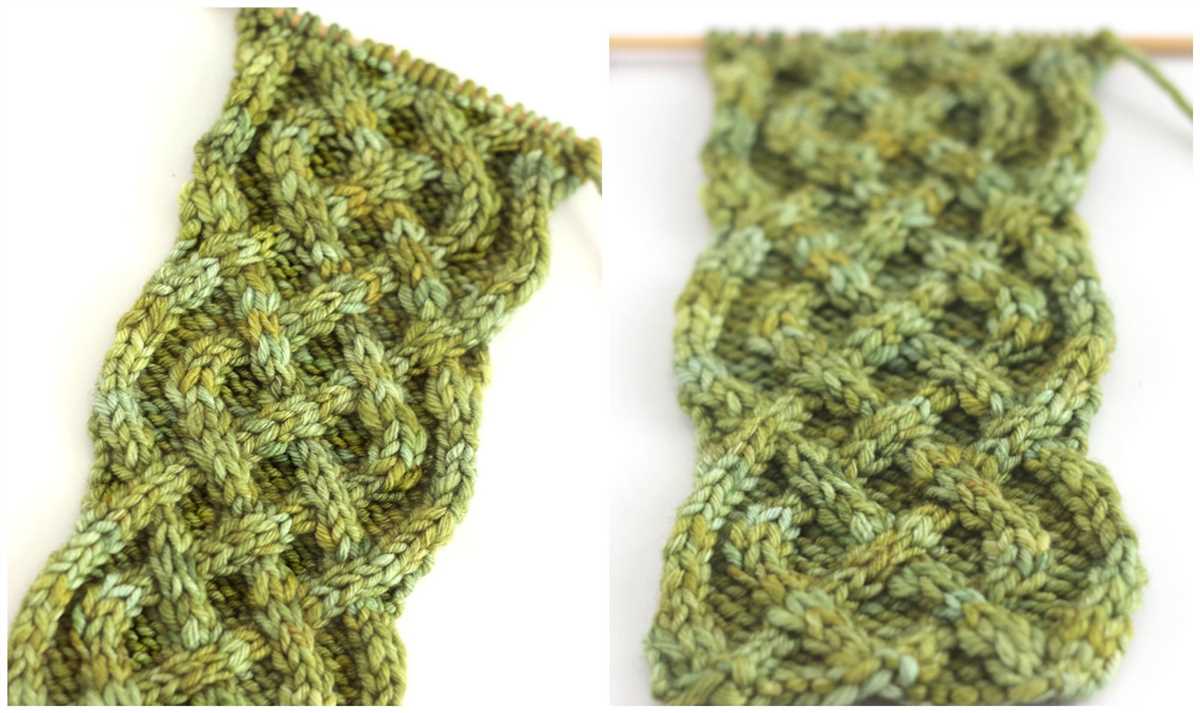
Knitting is a popular craft that involves creating fabric by intertwining yarn or thread loops using special needles. Whether you’re a beginner or an experienced knitter, it’s important to have a solid understanding of the basics in order to create beautiful and intricate designs.
One of the first things to learn when starting knitting is how to cast on. This is the process of creating the foundation row of stitches on the needle. There are different methods of casting on, including the long tail cast on and the knitted cast on. Each method has its own advantages and is suitable for different types of projects.
After casting on, the next step is to learn how to knit and purl. Knitting involves working stitches from the left needle onto the right needle, while purling involves working stitches from the right needle onto the left needle. These two basic stitches are the foundation for creating a variety of patterns and textures in knitting, such as the stockinette stitch, garter stitch, and ribbing.
Once you have mastered the knit and purl stitches, you can start exploring different knitting patterns. Knitting patterns are instructions that guide you through the process of creating a specific design. They include information on stitch combinations, increases, decreases, and any special techniques required to achieve the desired result.
It’s important to read knitting patterns carefully and understand the abbreviations and symbols used. Some common abbreviations include k (knit), p (purl), yo (yarn over), k2tog (knit two stitches together), and ssk (slip, slip, knit). By understanding these basic knitting terms and techniques, you’ll be able to follow knitting patterns with ease and confidently create your own projects.
Choosing the right yarn for your project
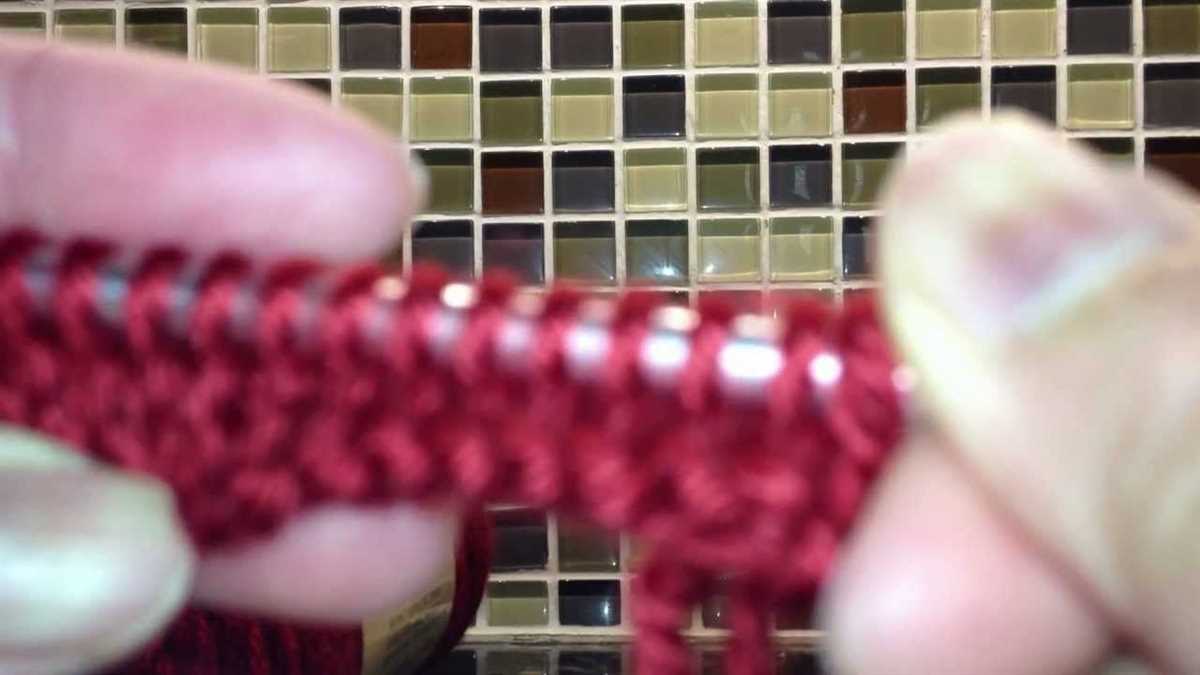
When starting a new knitting project, one of the most important decisions you’ll make is choosing the right yarn. The yarn you choose will greatly impact the look, feel, and durability of your finished project, so it’s important to make an informed decision. Here are some key factors to consider when selecting yarn for your knitting project.
Fiber content
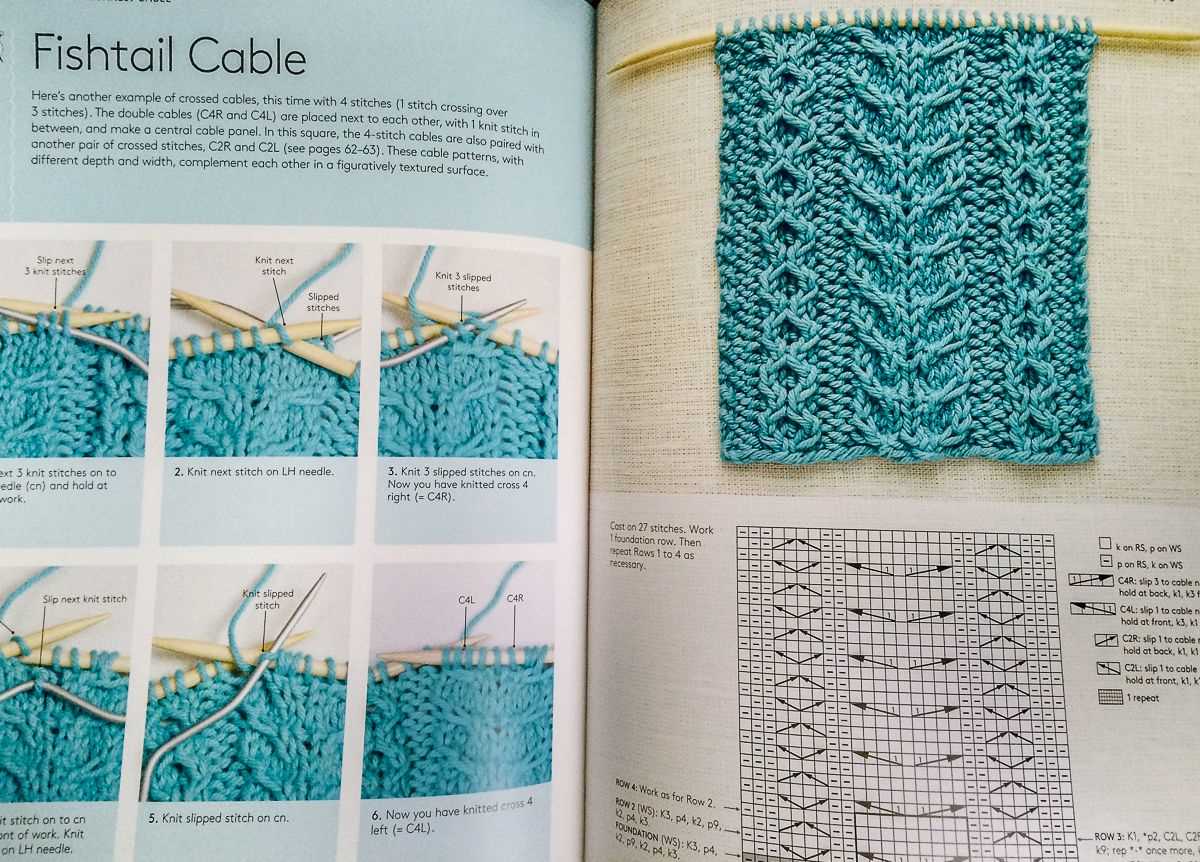
The fiber content of the yarn is one of the first things to consider. Different fibers have different properties and characteristics that will affect the final outcome of your project. For example, wool yarn is known for its warmth, elasticity, and durability, making it a popular choice for sweaters and hats. On the other hand, cotton yarn is lightweight and breathable, making it ideal for summer garments. Consider the qualities you want in your finished project and choose a fiber that aligns with those goals.
Weight
Another important factor to consider is the weight or thickness of the yarn. Yarn weight is categorized using standardized symbols, such as lace, fingering, sport, worsted, and bulky. The weight of the yarn will affect the drape and structure of your knitted fabric, as well as the size of your finished project. Thicker yarns are typically used for cozy blankets and winter accessories, while finer yarns are better suited for delicate lacework or lightweight garments. Consider the pattern you’re using and the desired outcome, and choose a yarn weight that matches those requirements.
Color and texture
The color and texture of the yarn can greatly enhance the visual appeal of your knitting project. Consider the color palette you want to work with and choose a yarn that complements or contrasts with your vision. Additionally, consider the texture of the yarn. Smooth yarns will create a more uniform fabric, while textured yarns can add depth and interest to your knitted piece. Keep in mind that complex stitch patterns and intricate details may be lost with highly textured yarns, so choose a texture that best showcases the pattern and design of your project.
Budget
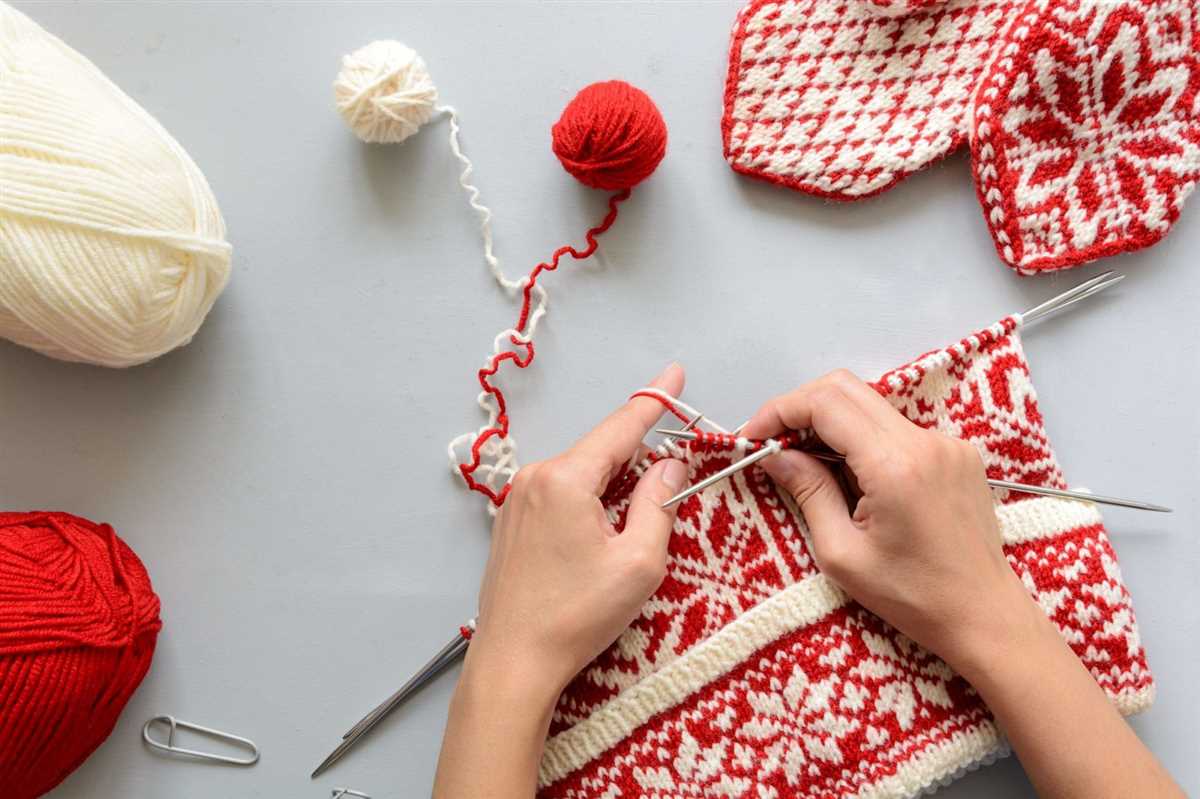
Lastly, consider your budget when choosing yarn for your project. Yarn can vary greatly in price, depending on the fiber content, brand, and quality. It’s important to find a balance between cost and quality, as cheap yarns may be more prone to pilling or stretching, while expensive yarns may not be necessary for simple projects. Consider the overall value and durability of the yarn, and choose one that fits within your budget without compromising the quality of your finished project.
By considering the fiber content, weight, color and texture, and your budget, you’ll be able to choose the right yarn for your knitting project. Taking the time to make this decision will ensure that your finished project turns out exactly how you envisioned it, with a beautiful and durable result.
Exploring different knitting tools and accessories
When it comes to knitting, having the right tools and accessories can make all the difference. Whether you’re a beginner or an experienced knitter, there are a variety of tools and accessories to help you create beautiful and intricate knitting patterns.
1. Knitting Needles
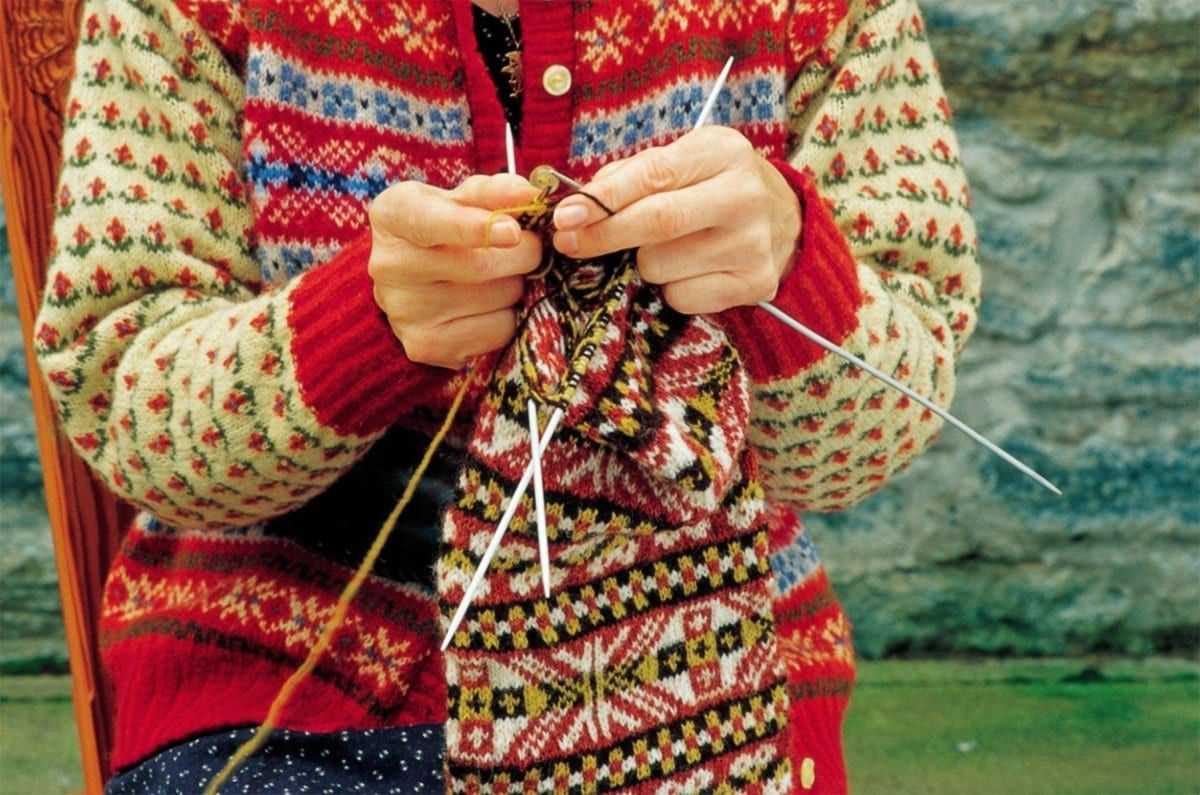
One of the most essential knitting tools is a good pair of knitting needles. There are different types of knitting needles available, including straight needles, circular needles, and double-pointed needles. Each type of needle has its own advantages and is best suited for specific knitting projects. For example, straight needles are commonly used for flat knitting, while circular needles are versatile and can be used for both flat and circular knitting.
2. Stitch Markers
Stitch markers are small rings or clips that are used to mark important points in a knitting pattern. They are extremely helpful in keeping track of increases, decreases, pattern repeats, and other important points in your knitting. Stitch markers come in various sizes and designs, allowing you to choose the ones that are most suitable for your knitting project.
3. Row Counter
A row counter is a handy tool that helps you keep track of the number of rows you have knitted. It is especially useful when working on large and complex knitting patterns, as it eliminates the need for manual counting and helps prevent mistakes. Row counters can be manual or electronic, and they are available in different shapes and sizes.
4. Yarn Swift and Ball Winder
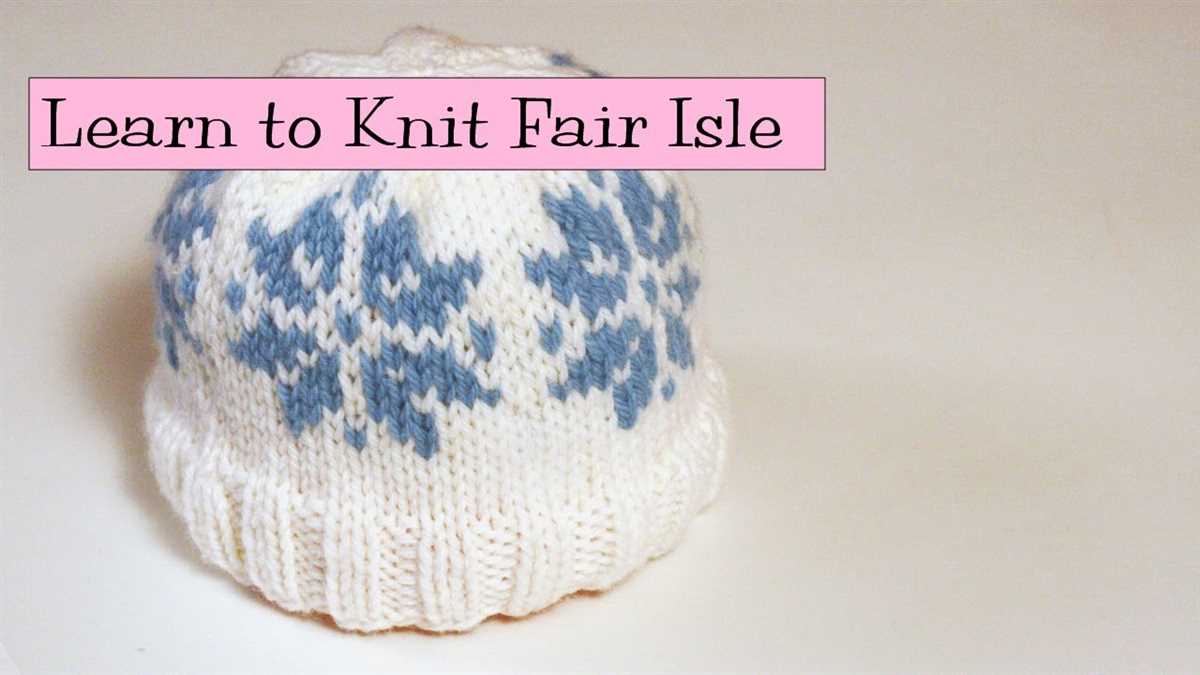
If you often work with skeins of yarn, a yarn swift and ball winder can be invaluable tools. A yarn swift holds the skein of yarn in place and helps you wind it into a neat and organized ball. A ball winder, on the other hand, is used to create center-pull yarn cakes, which are convenient to work with and prevent tangling.
5. Knitting Gauge
A knitting gauge, also known as a tension gauge, is an essential tool for achieving the correct gauge or tension in your knitting. It consists of a small ruler with evenly-spaced notches or holes that allow you to measure stitches and rows per inch. Using a knitting gauge helps ensure that your finished project will have the correct size and fit.
These are just a few examples of the many tools and accessories available for knitters. Exploring different knitting tools can enhance your knitting experience and help you create beautiful and intricate patterns with ease.
Learning commonly used knitting stitches
Knitting is a popular craft that allows you to create beautiful and functional items using just yarn and needles. One of the first things you’ll need to learn when starting knitting is the basic stitches. These stitches form the foundation of most knitting patterns and are essential to creating different textures and patterns in your knitted projects.
Knit stitch: The knit stitch is the most basic of all knitting stitches and is commonly abbreviated as “K” in knitting patterns. To knit, you simply insert the right needle into the stitch on the left needle, wrap the yarn around, and pull it through to create a new stitch. Knit stitches create a smooth fabric with a “V” shape.
Purl stitch: The purl stitch is the second basic knitting stitch and is commonly abbreviated as “P” in knitting patterns. To purl, you insert the right needle into the stitch on the left needle from right to left, wrap the yarn around, and pull it through to create a new stitch. Purl stitches create a bumpy and textured fabric, which is often used for ribbing or adding contrast to a knitted piece.
Once you have mastered the knit and purl stitches, you can start learning more advanced stitches such as the seed stitch, rib stitch, and cable stitch. These stitches can be combined in different ways to create intricate patterns and designs in your knitting. By practicing these commonly used knitting stitches, you will gain the skills and confidence to tackle a wide range of knitting projects and create beautiful handmade items.
Commonly used knitting stitches:
- Knit stitch (K)
- Purl stitch (P)
- Seed stitch
- Rib stitch
- Cable stitch
How to Read Knitting Patterns
Knitting patterns may seem intimidating at first, but once you understand how to read them, they become a useful tool for creating beautiful and intricate designs. Here are a few tips to help you decipher knitting patterns and make your knitting projects a breeze.
1. Start with the key:
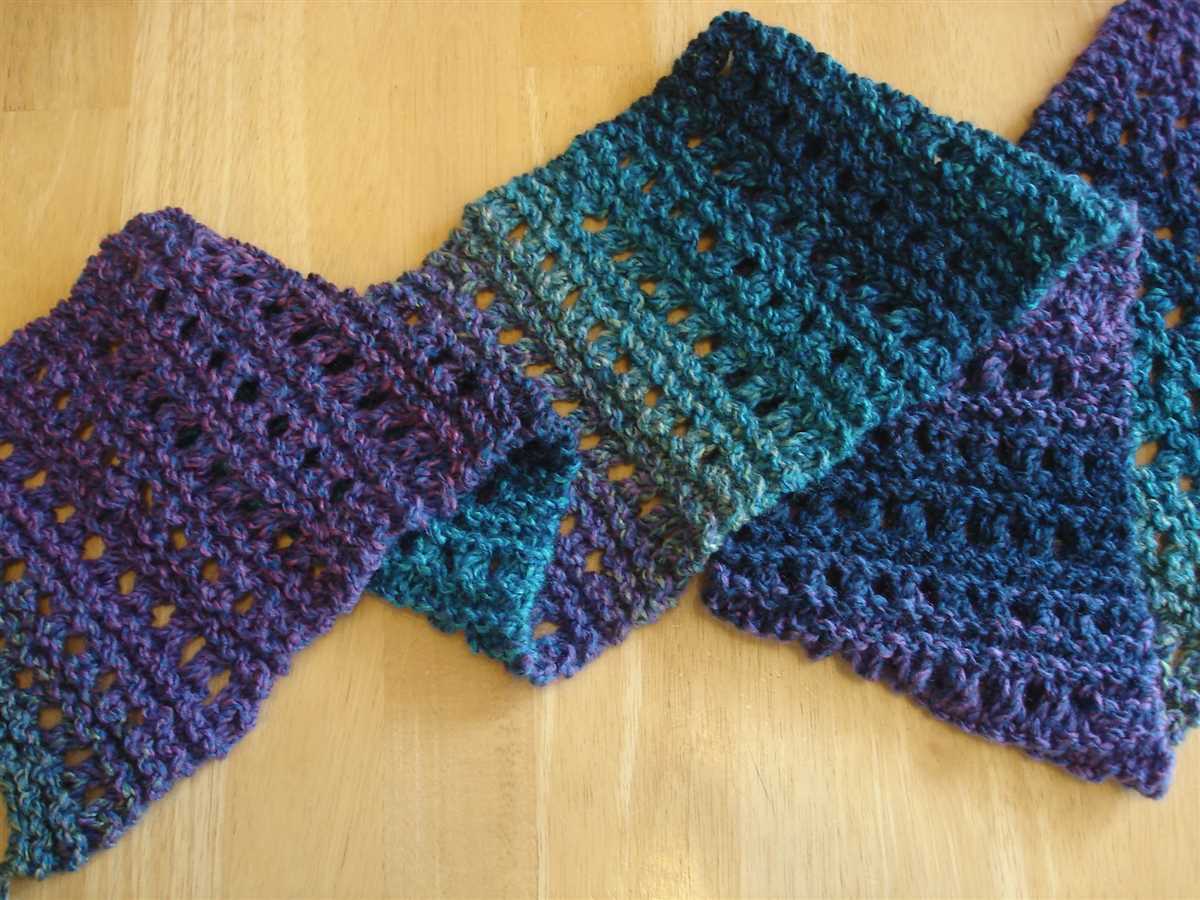
The key or legend is an essential part of any knitting pattern. It provides a guide to the different abbreviations and symbols used throughout the pattern. Familiarize yourself with the key before you start knitting, as it will help you understand the instructions and stitches involved.
2. Pay attention to the gauge:
Gauge refers to the number of stitches and rows per inch in your knitted fabric. It is crucial to achieving the correct size and fit of your project. Make sure to check the gauge specified in the pattern and adjust your needle size if necessary. Knitting a gauge swatch before starting the project can save you a lot of time and frustration in the long run.
3. Take it one step at a time:
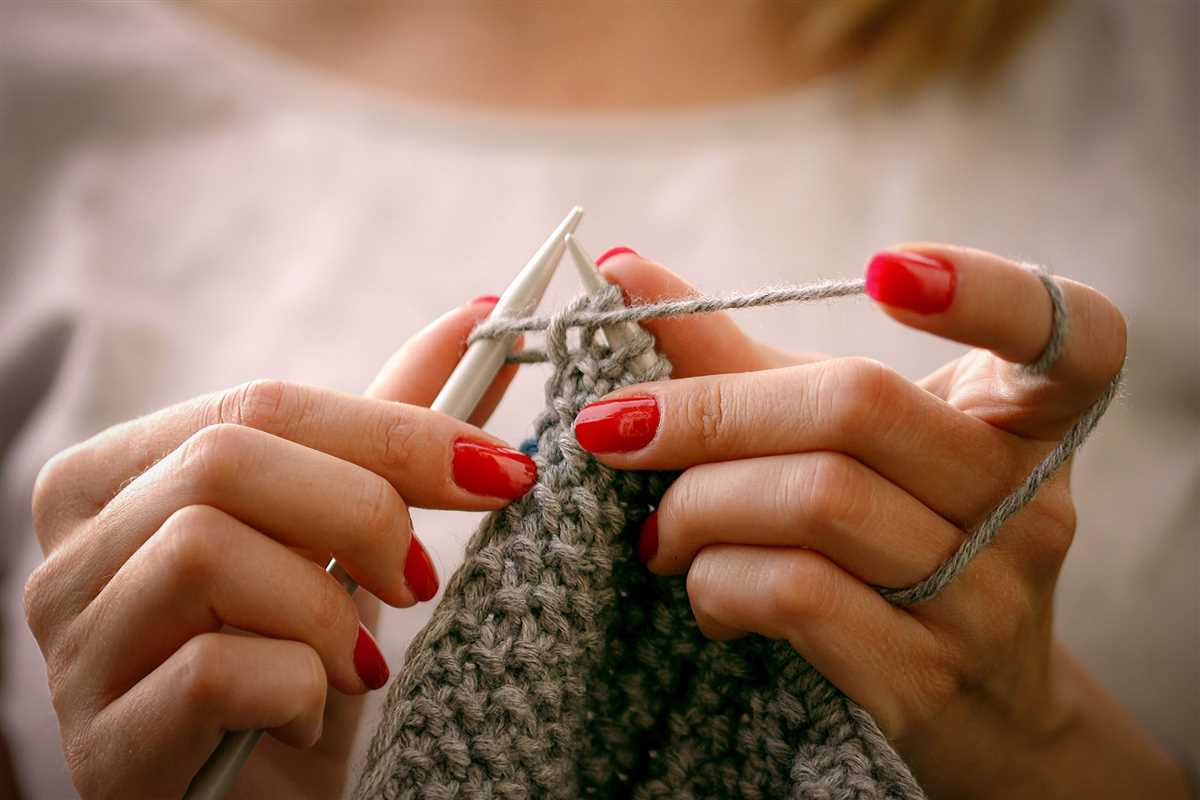
Knitting patterns are typically broken down into different sections or steps. Read through each step carefully, making sure you understand what is required before moving on to the next. Take note of any special stitches or techniques mentioned and refer to tutorials or guides if needed. Following the pattern step by step will help you avoid mistakes and ensure a successful outcome.
4. Use stitch markers:
Stitch markers are small plastic or metal rings that can be placed on the knitting needle to mark a specific stitch or section. They can be incredibly helpful in keeping track of your progress and identifying any pattern repeats or changes. Use stitch markers as instructed in the pattern to make your knitting easier and more efficient.
5. Keep track of your rows:
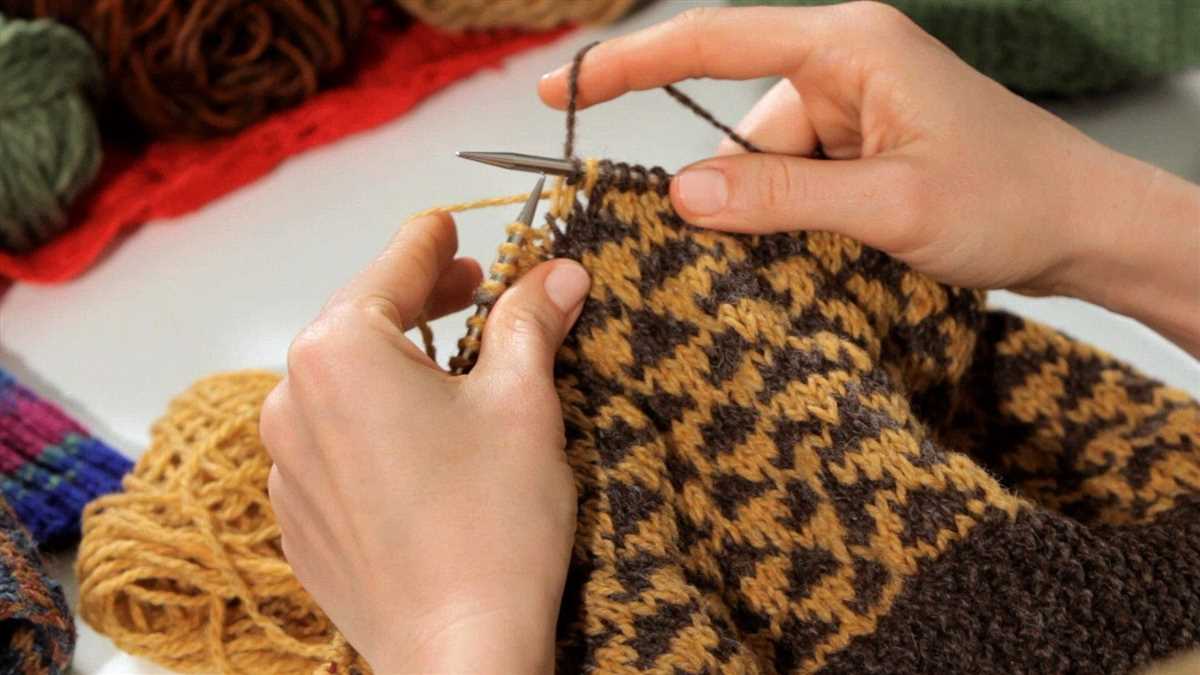
Counting rows is an essential part of following a knitting pattern. Use a row counter or make tally marks on a piece of paper to keep track of your progress. This will help you stay organized and ensure that you don’t miss any important instructions or pattern repeats.
With these tips in mind, reading knitting patterns will become second nature to you. Remember to take your time, practice, and don’t be afraid to ask for help if you get stuck. Happy knitting!
Understanding different types of knitting patterns
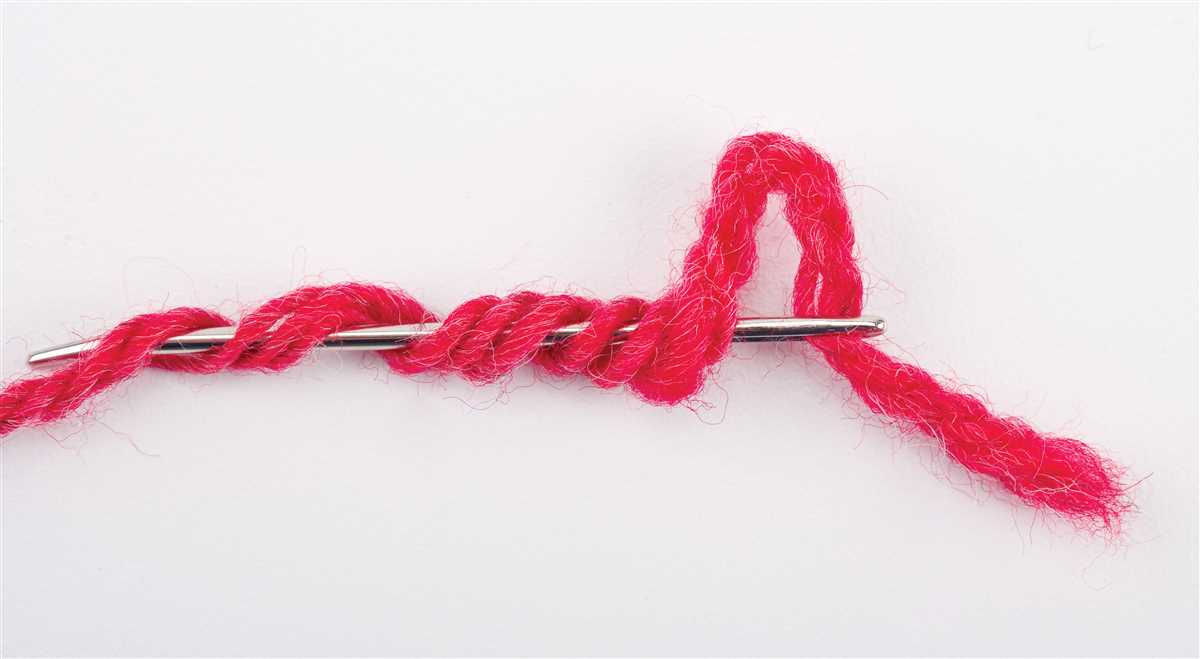
Knitting patterns are a crucial part of any knitting project, as they provide the instructions and guidance to create beautiful and intricate designs. There are various types of knitting patterns available, each with its own unique style and purpose.
1. Written patterns: The most common type of knitting pattern is the written pattern, which uses a combination of abbreviations, numbers, and explanatory text to provide step-by-step instructions. These patterns usually include detailed information about stitch counts, needle sizes, and gauge, making them suitable for beginners and experienced knitters alike.
2. Charted patterns: Charted patterns use symbols and diagrams to represent each stitch and row. They are particularly useful for working complex stitch patterns, colorwork, or lace. Knitters who prefer visual representation often find charted patterns easier to follow and understand.
3. Combination patterns: Combination patterns combine both written and charted instructions. They provide the flexibility to choose between following the written directions or referring to the chart, depending on the knitter’s preference or comfort level. These patterns are ideal for knitters who enjoy the best of both worlds.
4. Seamless patterns: Seamless knitting patterns are designed in a way that eliminates the need for sewing or seaming pieces together. They usually involve techniques like circular knitting or knitting in the round, resulting in a finished product with no visible seams. These patterns are popular for creating seamless sweaters, hats, and socks.
5. Stitch pattern patterns: Stitch pattern patterns focus on teaching specific stitch patterns rather than creating a specific project. They provide instructions for various types of stitches, such as cables, lace, or colorwork, allowing knitters to experiment and incorporate these patterns into their own designs.
Knowing and understanding different types of knitting patterns can help knitters choose the right pattern for their skill level and desired project. Whether following written instructions, using charts, or exploring new stitch patterns, knitting patterns offer endless possibilities for creativity and enjoyment.
Creating your own knitting patterns
Knitting is a popular craft activity that allows you to create one-of-a-kind items. While it’s great to follow knitting patterns created by others, designing your own patterns can be an exciting and rewarding experience. Whether you want to customize an existing pattern or create something entirely new, here are some tips to help you get started.
1. Inspiration: The first step in creating your own knitting pattern is to find inspiration. Look for ideas in nature, art, fashion, or even everyday objects. Take photos, sketch ideas, or create a mood board to gather your inspiration in one place.
2. Yarn and gauge: Before you start designing your pattern, choose the yarn you want to work with and determine the gauge. The gauge is the number of stitches and rows per inch, and it will determine the size of your finished project. Make a swatch to test your gauge and adjust your needle size if needed.
3. Sketch your design: Once you have your inspiration and yarn chosen, sketch out your design. Consider the overall shape, stitch patterns, and any special details you want to include. This will help you visualize how your finished knitting project will look.
4. Calculate stitches and rows: To create your knitting pattern, you’ll need to calculate the number of stitches and rows for each section of your design. Take into account the gauge and the desired finished size of your project. This will ensure that your pattern is accurate and will result in a correctly sized item.
5. Test and adjust: Once you’ve written your pattern, it’s a good idea to test it by knitting a sample. This will help you identify any errors or areas that need adjustment. Make notes as you go and make any necessary changes to your pattern.
6. Share and refine: After you’ve tested your pattern and made any necessary adjustments, you can share it with others. You can publish it on knitting forums, social media, or even create your own knitting pattern website. This will allow you to get feedback and refine your pattern further.
Creating your own knitting patterns can be a fun and fulfilling process. It allows you to unleash your creativity and design unique pieces that reflect your personal style. With the right inspiration, materials, and calculations, you can create beautiful knitting patterns that others will love to knit.
Troubleshooting common knitting mistakes
Knitting is a wonderful craft that allows you to create beautiful and unique pieces. However, it can be frustrating when you make mistakes along the way. Fortunately, many common knitting mistakes have simple solutions. By learning to identify and fix these mistakes, you can continue knitting with confidence and avoid having to start over.
1. Dropped stitches: One of the most common knitting mistakes is dropping a stitch. This happens when a stitch slips off the needle and unravels. To fix a dropped stitch, use a crochet hook or the knitting needle to pick up the dropped stitch and place it back on the needle. Ensure it is aligned correctly with the surrounding stitches before continuing.
2. Uneven tension: Tension refers to how tightly or loosely you hold the yarn while knitting. Uneven tension results in stitches of different sizes, which can affect the overall appearance of your project. To fix uneven tension, check your hand position and the way you hold the yarn. Practice maintaining a consistent tension throughout your knitting to create even stitches.
- 3. Twisted stitches: Twisted stitches occur when you accidentally knit into the back of a stitch instead of the front, resulting in a twisted appearance. To fix twisted stitches, carefully identify the twisted stitches and unravel them. Then, re-knit them correctly by inserting the needle into the front of the stitch.
- 4. Holes or gaps: Holes or gaps can occur when you unintentionally skip or add stitches. To fix this, carefully count your stitches and compare them to the pattern instructions. If you have too few stitches, make sure you are not skipping any steps. If you have too many stitches, look for accidental yarn overs or extra stitches and correct them.
- 5. Split yarn: Splitting yarn happens when the needle accidentally splits the individual strands of the yarn. This can result in weak or uneven stitches. To fix split yarn, carefully reposition the needle to avoid splitting the yarn. If a stitch is particularly weak due to splitting, consider reinforcing it with some additional stitches.
By being aware of these common knitting mistakes and knowing how to troubleshoot them, you can save time and frustration in your knitting projects. Remember, practice makes perfect, and the more you knit, the more confident you will become in fixing any mistakes that may arise.
Exploring advanced knitting techniques and patterns
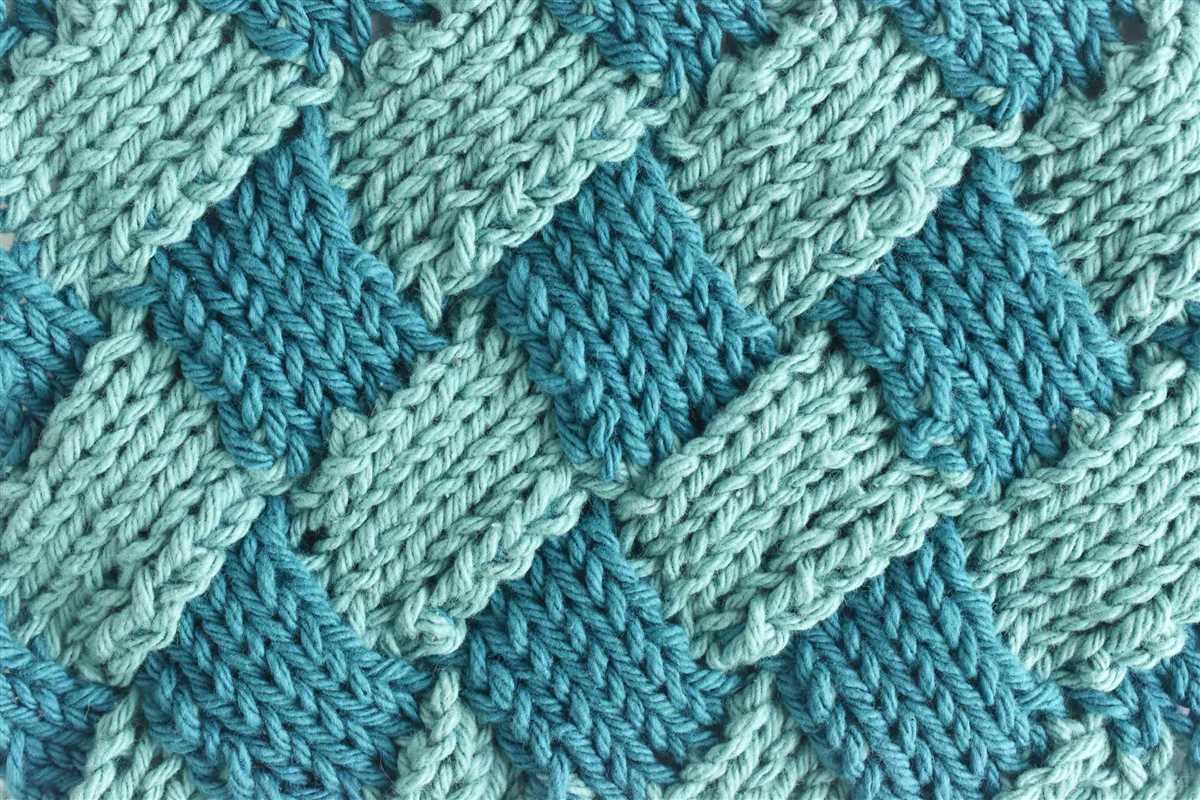
Knitting is a craft that offers a wide range of possibilities for creativity and skill development. Once you have mastered the basic knitting stitches and patterns, you can start exploring more advanced techniques to create intricate and beautiful designs.
1. Lace knitting: Lace knitting involves creating delicate and openwork patterns using a combination of yarn overs and decreases. This technique is perfect for creating lightweight and airy garments, such as shawls, scarves, and even lightweight sweaters. It requires attention to detail and following complex charts or written instructions.
2. Cable knitting: Cable knitting is a technique that creates beautiful textured patterns by crossing stitches over each other. This technique is commonly used to create classic and cozy designs, such as sweaters, hats, and blankets. Cable knitting can be simple, with just a few stitches crossing over, or more complex with intricate cable patterns.
For those looking to challenge themselves further, there are advanced cable techniques, such as traveling stitches and twisted stitches, that can add stunning complexity and depth to your knitting projects.
3. Fair Isle knitting: Fair Isle knitting, also known as stranded knitting, involves working with multiple colors in a single row to create intricate patterns. This technique is often used to create traditional and colorful designs, such as Fair Isle sweaters and accessories. It requires attention to tension and managing yarn floats, but the end result is a visually stunning and warm garment.
4. Intarsia knitting: Intarsia knitting is a technique used to create large blocks of color or complex images within a knitted piece. It involves using separate balls of yarn for each section of color and twisting the yarns at color changes. Intarsia knitting allows for endless possibilities in design and can be used to create beautiful pictorial or geometric patterns.
Exploring these advanced knitting techniques and patterns will not only expand your knitting skills but also allow you to create unique and intricate pieces that showcase your creativity. Whether you choose to tackle lace knitting, cable knitting, Fair Isle knitting, or intarsia knitting, the journey of learning and mastering these techniques will undoubtedly bring joy and satisfaction to your knitting experience.
Getting inspiration for your knitting projects
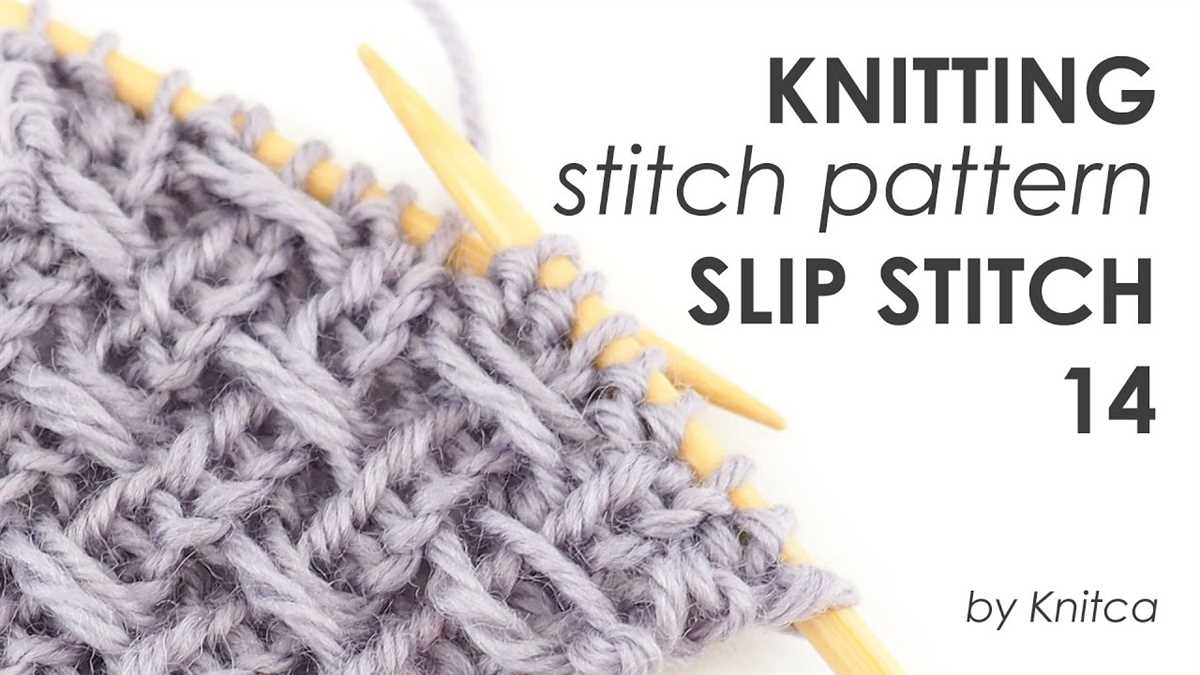
When you’re starting a new knitting project, it can sometimes be difficult to come up with ideas and find inspiration. However, there are many different ways you can fuel your creativity and find the perfect pattern for your next knitting adventure.
One great way to get inspired is to browse through knitting magazines and books. These publications often feature a wide variety of knitting patterns, from beginner-friendly designs to more advanced projects. You can also find patterns online, either through knitting websites or on social media platforms like Pinterest and Instagram. Just type in keywords like “knitting patterns” or “knitting inspiration” and you’ll be presented with countless options to choose from.
Another way to find inspiration is to visit local yarn stores or attend knitting events and workshops. Yarn stores often have displays of sample projects and pattern books that you can peruse. Attending knitting events and workshops allows you to see other people’s creations and get ideas for your own projects. You can also join knitting groups or online communities where you can connect with other knitters and share ideas and inspiration.
Once you’ve found some patterns that inspire you, don’t be afraid to make them your own! You can customize patterns by changing the colors of the yarn, adding or removing stitch patterns, or combining different elements from multiple patterns. This will not only make your projects unique but also help you grow as a knitter by experimenting with different techniques and designs.
Ultimately, finding inspiration for your knitting projects is all about exploring different sources, experimenting with patterns, and allowing your creativity to flow. Whether you’re a beginner or an experienced knitter, there’s always something new to discover and create. So don’t be afraid to think outside the box and let your imagination guide you on your knitting journey. Happy knitting!
Joining a knitting community for support and ideas
Learning to knit can be an enjoyable and rewarding experience, but it can also be challenging at times. Joining a knitting community can provide you with the support, inspiration, and ideas you need to enhance your skills and take your knitting to the next level.
Whether you prefer in-person meetups or online forums, there are various knitting communities available that can help you connect with fellow knitters who share your passion. These communities offer a range of benefits, including:
- Support and encouragement: Joining a knitting community allows you to connect with others who understand the triumphs and challenges of knitting. You can share your progress, ask for advice, and receive support and encouragement when you need it.
- Ideas and inspiration: Knitting communities are a great source of ideas and inspiration. You can learn about new patterns, techniques, and yarns that can spark your creativity and push you to try new things.
- Learning opportunities: Many knitting communities organize workshops and classes where you can learn new knitting techniques or refine your existing skills. These educational opportunities can help you grow as a knitter and expand your knowledge.
- Exposure to different perspectives: By interacting with knitters from diverse backgrounds, you can gain insights and perspectives that you may not have considered. This exposure can help you broaden your horizons and approach knitting from new angles.
If you’re unsure of where to start, consider joining a local knitting group or guild. These groups often meet regularly in person and provide a welcoming environment for knitters of all skill levels. Additionally, online knitting forums and social media groups can offer a virtual sense of community, allowing you to connect with knitters from around the world.
Joining a knitting community can be a valuable addition to your knitting journey. It can provide you with the support, inspiration, and ideas you need to grow as a knitter. So don’t hesitate – find a knitting community that suits your needs and start connecting with fellow knitting enthusiasts today!